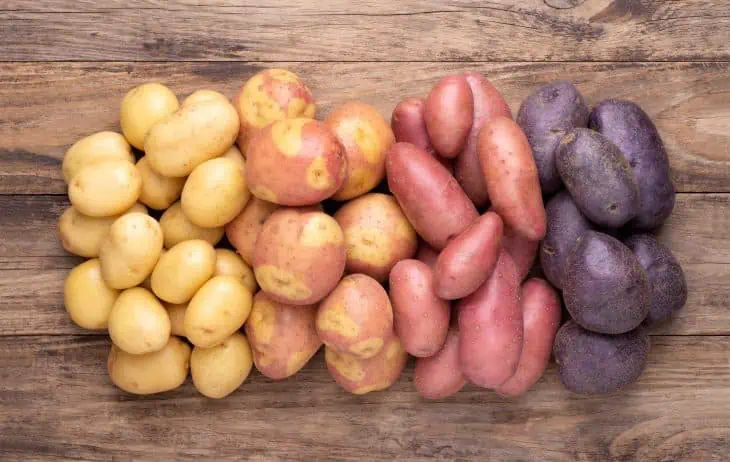
Before we begin, what do you know about the types of potatoes you cook with? Are familiar with the consistencies and texture needed to enhance the full flavor of your potato dish? Have you been using the same varieties of potatoes when you cook for the holidays?
If you can’t answer these questions, you have to check out our list of potato variants! There’s more to those spuds than just sweet and plain. You must familiarize yourself with the different types of textures each type features. A quick Google search shows you the different categories that cooks use to describe different kinds of potatoes. Some define them using starchy, waxy, and a little bit of both while others categorize spuds as smooth, salad, or fluffy. With this, you can bring out the best flavors in every potato recipe you find online.

Several cultures and cuisines highlight the versatile flavor of potatoes. Don’t confine yourself to cooking boiled or fried spuds. In truth, there are several ways to cook and prepare potatoes. With their variety of shapes and colors, you can serve spuds in multiple ways. Each kind also showcases its unique flavor once cooked, roasted, or baked. Discover which ones fit best with your favorite potato recipes with our detailed list.
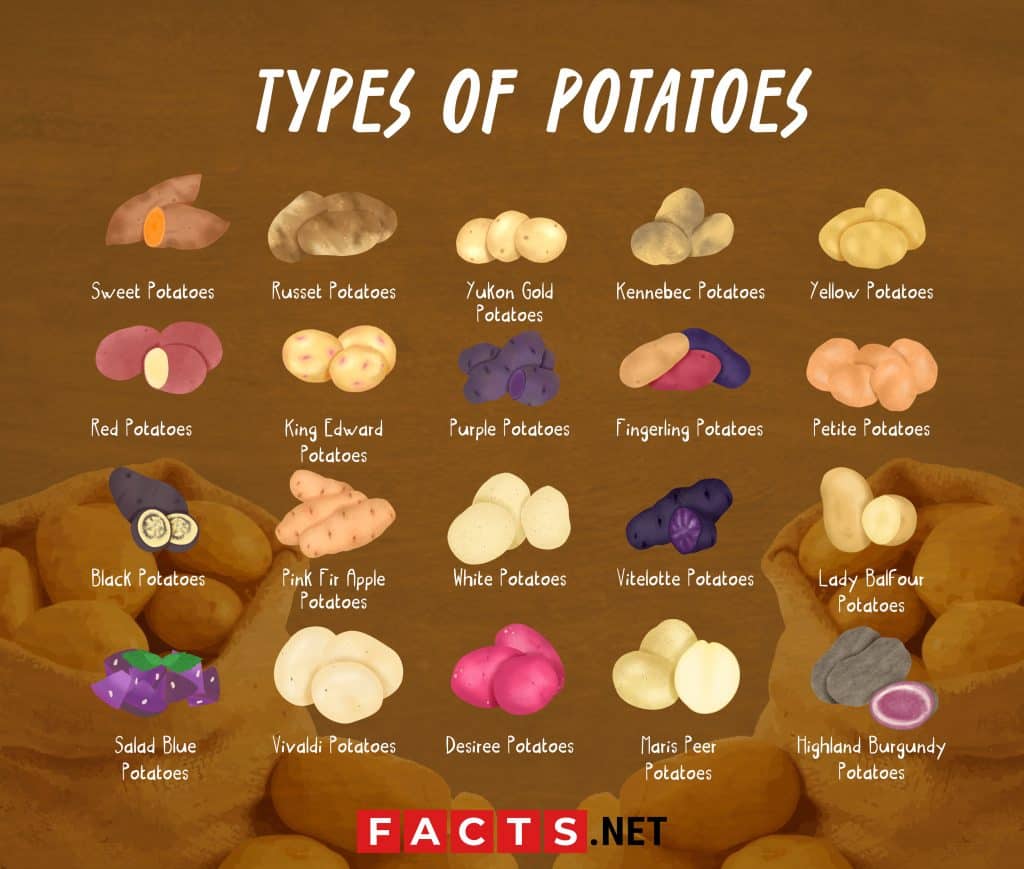
1. Sweet Potatoes
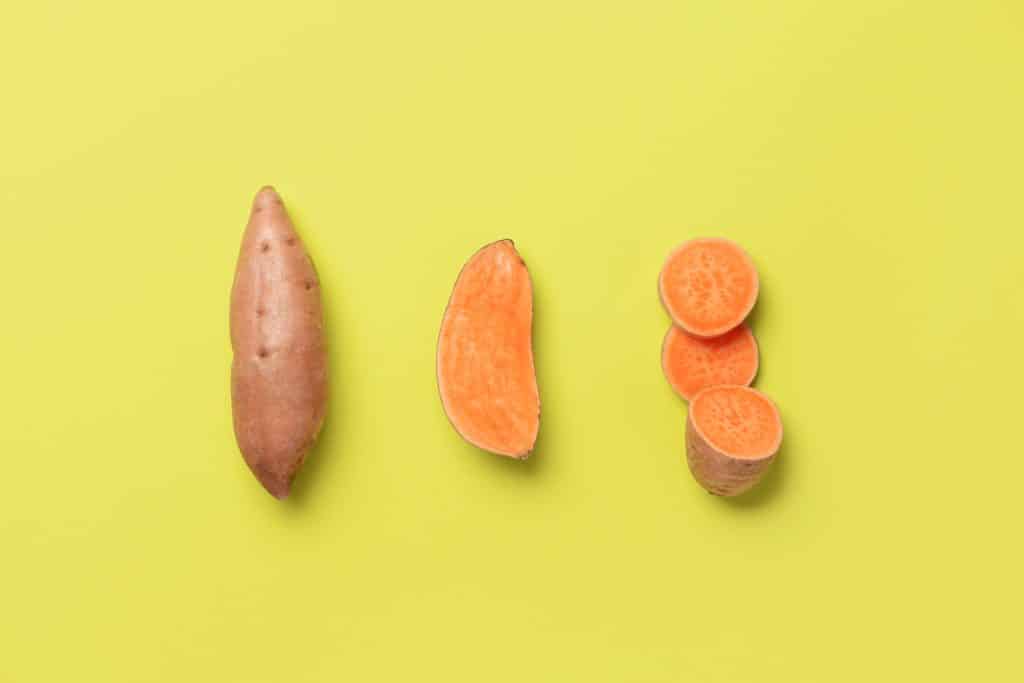
Sweet potatoes are the types of potatoes that come in a variety of shapes and colors. Each variant also offers different sweet and nutty flavors once served. Despite their similar appearances, sweet potatoes are distant relatives of regular potatoes. Sweet potatoes belong to the Plantae family Convolvulaceae, the morning glory family that grows into trees, shrubs, and herbs. Meanwhile, normal potatoes are part of the Solanaceae family, the nightshades.
Aside from their rich flavors, sweet potatoes offer nutrition and antioxidants like beta carotene and protein. Each bite of cooked sweet potato is enough to fill your stomach ’til your next meal. The classic ways of cooking sweet potatoes are roasting and baking. You can also try serving a Sweet Potato Pie and coffee as a filling snack to your friends and loved ones.
2. Russet Potatoes
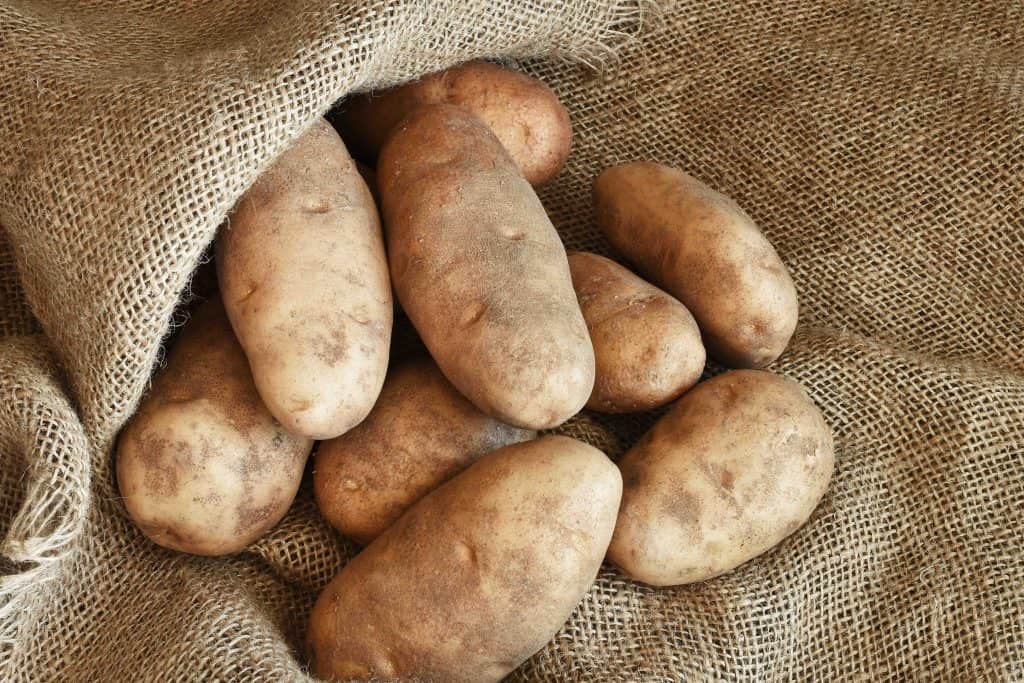
Russet potatoes are probably the most famous among all the types of potatoes on our list. These spuds usually make their way to almost every grocery or farmer’s market. They also grow well in different parts of the world thanks to several available cultivars and varieties. In the United States, russet potatoes are also called Idaho potatoes.
Because of their light and fluffy texture, russet potatoes are perfect for multiple potato recipes. Opting to leave the skin on or off won’t affect the dish. However, we advise you to wash the spuds first and cut off the remaining dark spots. It may sound complicated but beginner cooks can easily cook Crock Pot Mashed Potatoes. Meanwhile, skilled home cooks can try making their potato gnocchi using russet potatoes.
3. Yukon Gold Potatoes
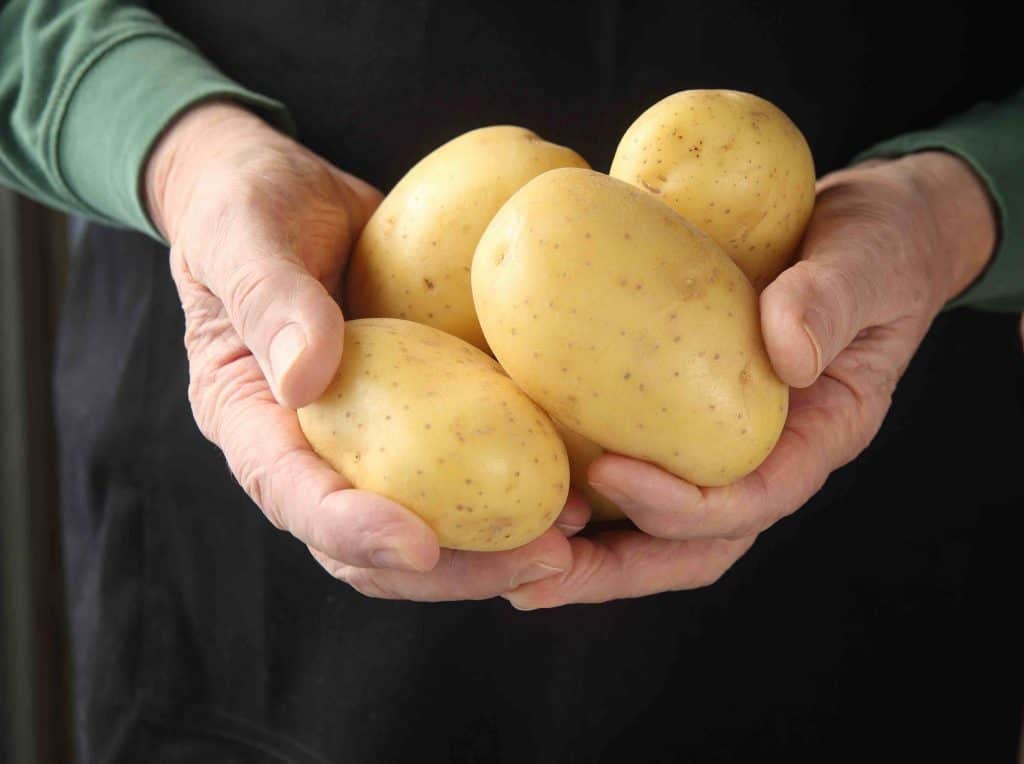
One of the most common types of potatoes in North and South America is the Yukon Gold potato. It stands out with its smooth bright yellow flesh and eye-free skin. This spud variant is known for maintaining its quality amidst dry-heat and wet-heat cooking methods. Most potatoes turn out too stiff or crumbly with those cooking styles.
Yukon Gold potatoes taste better if you leave their skin on when cooking. This is due to the variant’s smooth outer layer that is also packed with nutrients. With this, you can retain the spud’s shape and firmness during any cooking process. Some of the simple ways of cooking Yukon Gold potatoes include sprinkling salt and pepper before frying, roasting, or baking them. You can also pop them in your slow cooker and try out dishes like potato and leek soup or Zesty Roasted Potato Salad.
4. Kennebec Potatoes
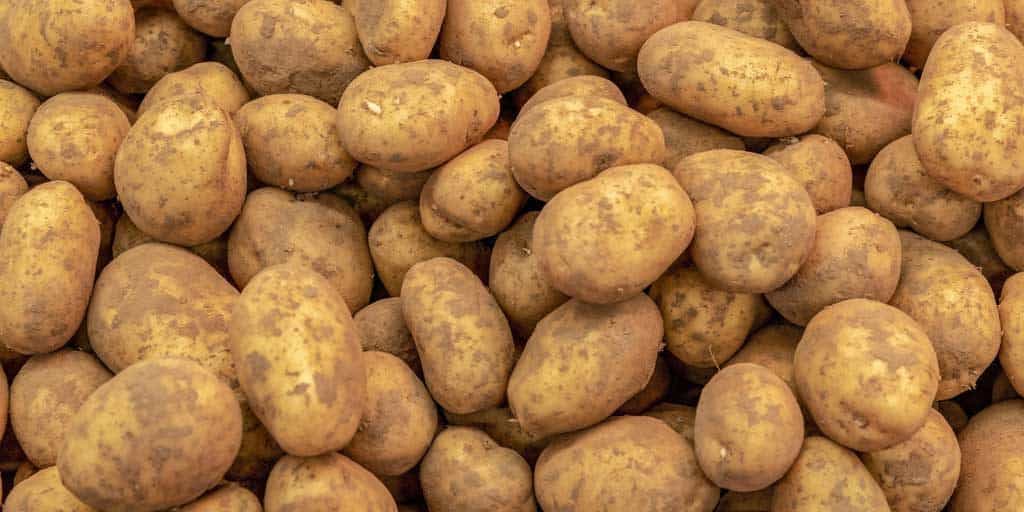
Kennebec potatoes fall under the white potato variant due to their inner color. This spud type is a hybrid that was made in Beltsville, Maryland in 1941. It gained fame for its long oval body shape which ended with rounded ends. After its commercial release, Kennebec potatoes became the commonly used spud in several potato chip companies in the United States and Canada.
The Kennebec potato’s thin skin and minimal water content make it perfect for making fried potato wedges, chips, or french fries. This makes them the perfect potatoes to cook when you’re in a rush. Apart from double frying, you can enjoy crispier spuds by wiping off excess water with paper towels. You can also enjoy your Kennebec potatoes by cooking them as mashed potatoes or as hash browns for breakfast.
5. Yellow Potatoes
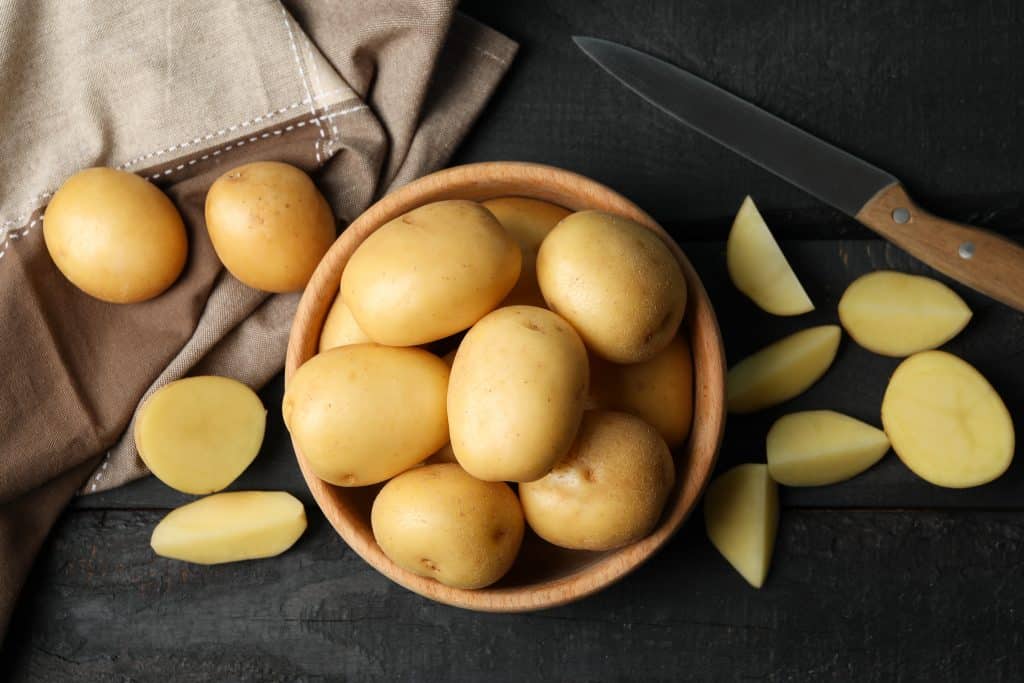
These types of potatoes are the perfect substitute for the Yukon Gold variant because they come from the same group. You’ll rarely find them covered with brown tones because farmers harvest them faster than other potatoes. Despite this, we suggest you remain meticulous in shopping for yellow potatoes and avoid ones with shriveled or green-tinted skin.
Yellow potatoes are known for contained low to medium starch. This makes them the perfect spuds for several potato dishes such as soups and chowders. The bright color and sweet aftertaste of yellow potatoes match with the versatile flavors of eggs. Because of this, most home cooks or experienced chefs prefer using different types of yellow potatoes to breakfast frittatas or baked quiches. You can also use these potatoes to add vibrance to casseroles or mashed potatoes.
6. Red Potatoes
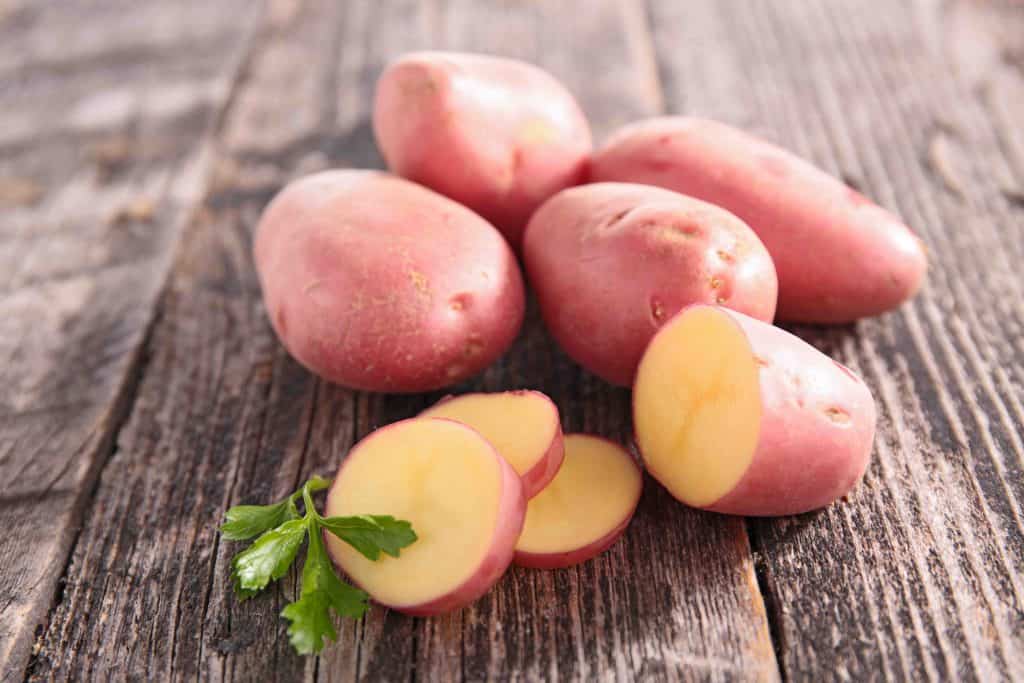
Red potatoes contain rich nutrients and antioxidants on their skin. The potato’s light red color comes from anthocyanins. Aside from beneficial antioxidants. this pigment is known to contain anti-inflammatories that help lessen the risk of people with cancer. Because of this, we advise you to keep cook this type of potato without peeling or removing its skin. Additionally, red potatoes are more like vegetables than regular potatoes because of the various vitamins and minerals found in each serving.
People practicing healthy meal regimens tend to eat red potatoes instead of sweet or normal variants. Regular consumption of these spuds boosts energy, improves blood pressure, and helps lessen your stress levels. The spud also offers enough fiber and Vitamin C that the body needs daily. If you want to feed healthier food to your children, try serving them red potatoes instead of regular ones.
7. King Edward Potatoes
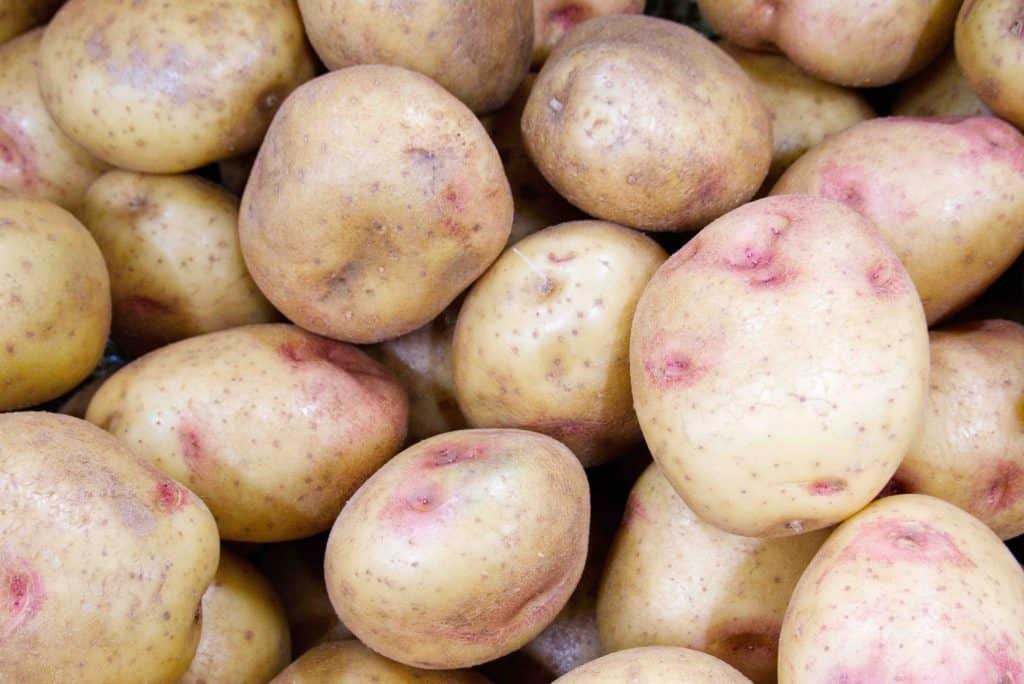
King Edward potatoes stand out with their white skin with pink or light red tints. This potato variant doesn’t thrive well in mass productions. Because of this, they’re commonly sold in specialty markets instead of large grocery chains. If you’re hoping to grow spuds at home, you can try planting King Edward potatoes in your garden. With proper care and attention, you can bring out the fullest flavor of this potato type right in the comfort of your home.
Because of their high starch content, King Edward potatoes suit potato recipes like mashed potatoes and potato cakes. Once cooked, the spud’s inner flesh brings out a fluffy texture that makes most creamy soups gooier without adding any flour or extra starch. Instead of sticking with Russet potatoes, you can also substitute King Edward potatoes when making gnocchi from scratch.
8. Purple Potatoes
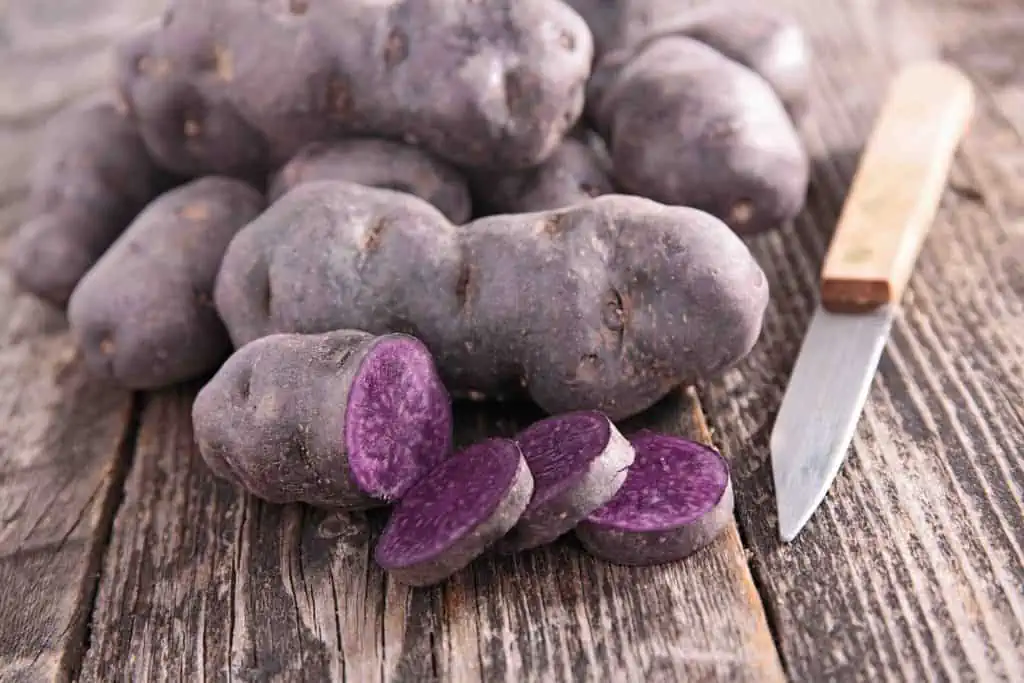
Purple potatoes stand out from other potato varieties because of their unique color. In some countries, purple spuds are also considered sweet potatoes due to their strong sweet taste and smell once boiled or steamed. Because of this, some people refer to them as purple yams. Most variants of this potato come with dark purple outer skin with a brighter shade when cut open.
Like red potatoes, eating cooked purple potatoes is better than regular spuds. Their distinct color is also packed with nutrients that help you lose weight without losing the energy you need for the day. You can also convince your kids to eat healthier by mixing or alternating purple potatoes with normal ones. With this, healthy meals become more appealing to kids without any force. Purple potatoes are also famous in several Asian street food stalls and night markets. There, the spuds are cooked, chilled, and usually served with sweet taro and tapioca pearls.
9. Fingerling Potatoes
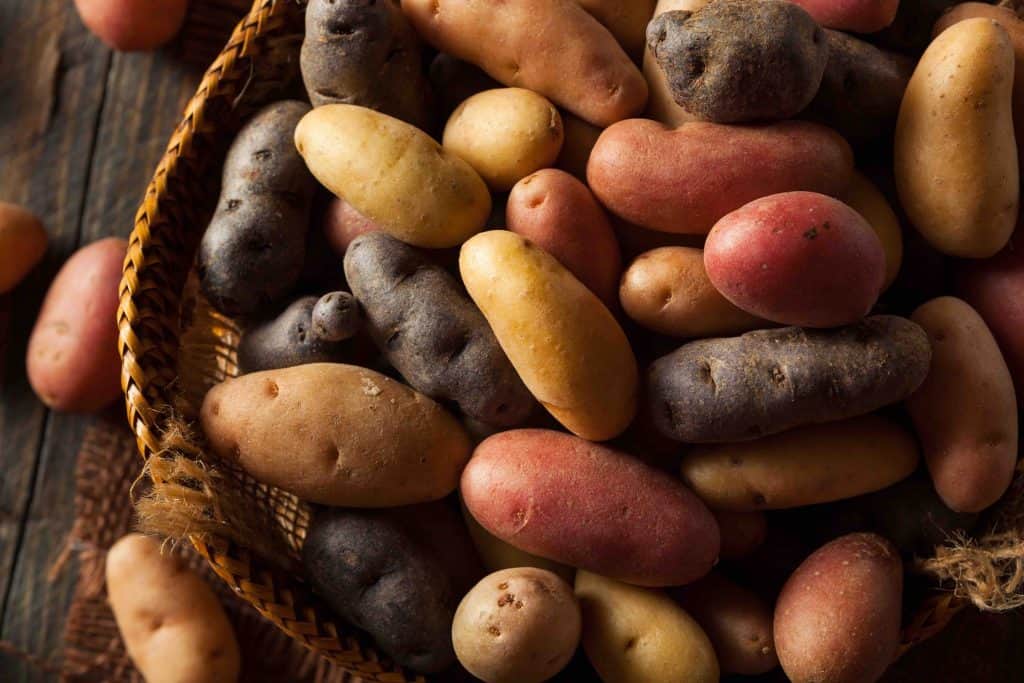
True to their name, fingerling potatoes look like stubby fingers because of their long elongated appearance. Because of its size, fingerling spuds are often mistaken as potato cultivars or stunted potato variants. In truth, these spuds normally develop to their small size and narrow shape. They also come in a variety of colors but are commonly sold looking like long and slim russet potatoes.
Due to their shape, steamed or boiled fingerling potatoes are usually served as an ingredient in several kinds of salad. Their versatile taste enhances the flavor of most salad dressings and vinaigrettes without losing their original texture. The slim shape of fingerling potatoes also makes them great spuds for french fries or potato wedges. You can just sprinkle salt and pop them in the fryer after a few swift slices.
10. Petite Potatoes or Baby Potatoes
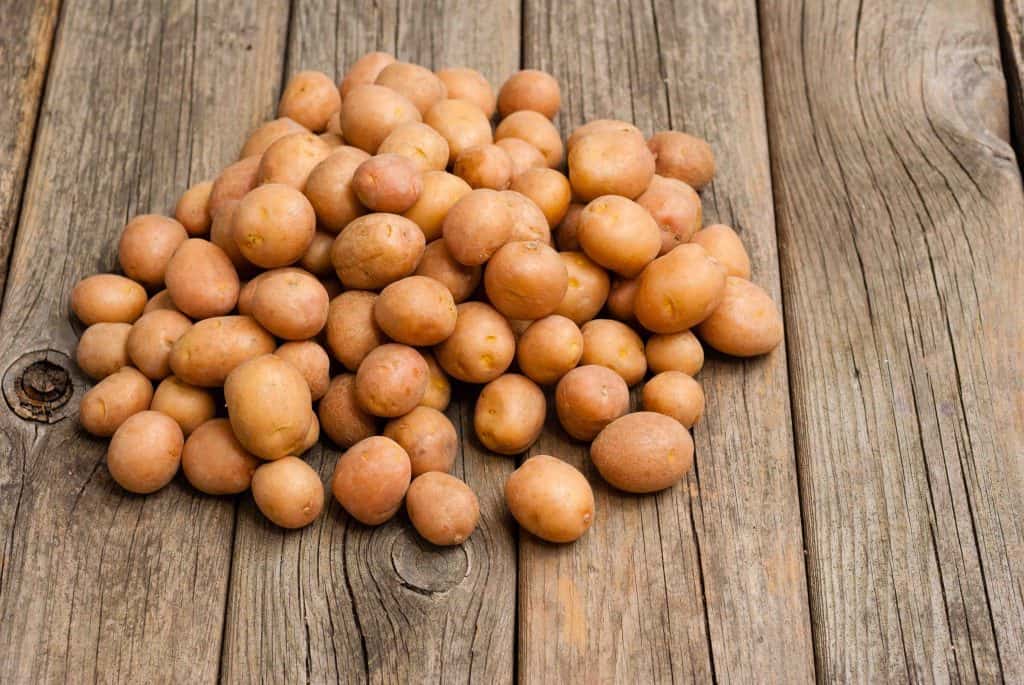
Petite potatoes are also called baby potatoes, marbles, pearls, and several other names pertaining to their small size. Unlike fingerling potatoes, petite spuds are the stunted versions of different types of potatoes. To distinguish them, you have to look closely at the small spuds and see which features resemble other potatoes. Farmer’s markets usually sell all colors in bulk but most groceries arrange and pack them by color.
Because of the spuds’ small size, we advise you not to attempt peeling or slicing off the skin of petite potatoes. As mentioned, potato skins are also packed with the plant’s nutrients. Even home cooks and experienced chefs only wash and cook petite potatoes while keeping the skins on. Thanks to their convenient shape, you can easily cook and prepare them by simply popping them in the fryer, oven, or over the stove.
11. Black Potatoes
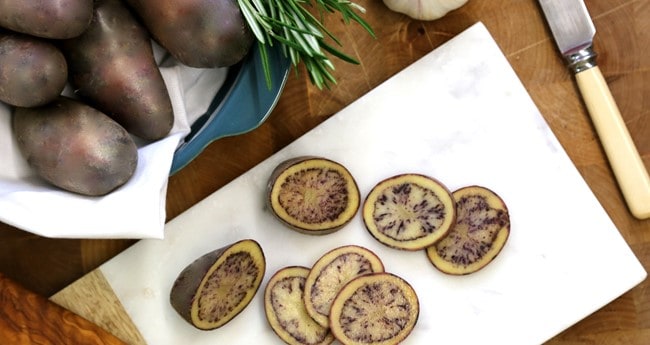
Much like the purple variant, black potatoes stand out from other types of potatoes due to their dark hue. These darks spuds usually disgust buyers because they appear with uneven and thick skin. Once sliced open, they offer a more unusual look with their black or deep blue ring and speckled inner flesh. They’re also called Shetland Black potatoes after being originally developed at the Shetland Islands.
Like most of the spuds on our list, we strongly advise you not to peel off the skin of black potatoes before. Keeping the skin on preserves the tuber’s nutrients and enhances the flavor of your potato dish. Once cooked, black potatoes feature a fluffy texture that works great with recipes like seasoned roast potatoes or lightly salted potato crips. You can also challenge yourself by cooking these dark spuds as Polenta Fries without peeling the skin off.
12. Pink Fir Apple Potatoes

The Pink Fir Apple potato variant is one of the oldest types of potatoes developed in farms. The variety was initially created in 1850. At first, this type of spud looks similar to russet or King Edward potatoes. However, their difference from other tubers is their large bodies that often come out knobby and elongated. Because of this, potato farmers often burst out laughing when harvesting these phallic-looking spuds from the ground. They’re usually bought in online specialty stores in the United Kingdom.
Pink Fir Apple potatoes received acclaim for their distinct nutty flavor. Unlike most fluffy spuds, the Pink Fir Apple potato brings out a smooth texture once cooked. This makes them great potatoes for various salad recipes like Avocado Potato Salad. You can also cut them vertically to make potato crisps and fries. They come out crispier than most potatoes because of their low starch content.
13. White Potatoes

White potatoes are often mistaken as yellow potatoes due to the similarities of their outer skins. However, you can tell the two types apart by familiarizing yourself with the two main shapes of the white variant. Compared to most yellow potatoes, white spuds come in round or long oval bodies. They also have lighter beige outer skin and fewer freckles than other spuds. Russet potatoes are the most common type of white potatoes you buy in groceries or stores near you.
Most home cooks and experienced chefs vie for white potatoes when trying out new potato dishes. They’re like a blank slate in cooking thanks to their versatile taste. When baked or roasted, white spuds easily absorb the flavors or seasonings incorporated into them. We advise beginners to use white potatoes in simple potato dishes like Roasted Potatoes or Potato Salad. Dishes like these help new cooks get used to different slices of potatoes and monitor their food’s cooking time.
14. Vitelotte Potatoes
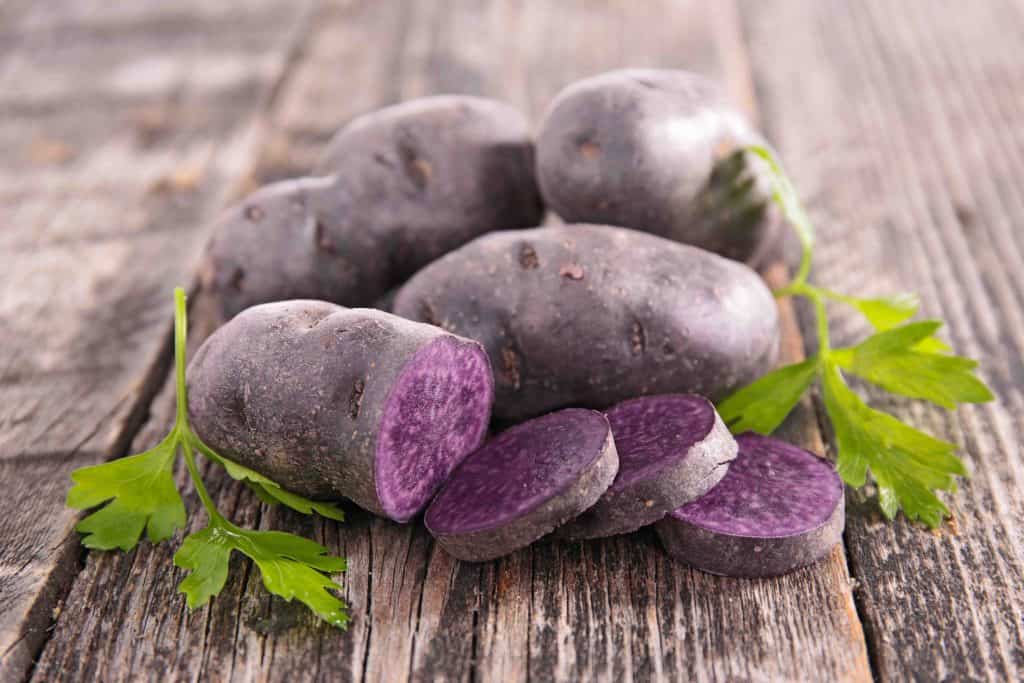
The Vitelotte potato is a type of purple potato famous in French gourmet cuisine. It also gained renown for being part of researches on the healthy properties of purple-colored fruits and vegetables. A serving of these purple spuds contains potassium, vitamin C, iron, and anthocyanin. The benefits of eating Vitelotte potatoes include a lesser risk of cardiovascular diseases and the prevention of dementia. You might also know them for being gluten-free and fat-free for those hoping to lose weight.
The vibrant color of Vitelotte potatoes remains intact after being cooked, pureed, or boiled. You can make a fancy meal by puréeing and cooking them salmon and french beans. You can also try out simple recipes like air-fried potato crisps or potato gnocchi. Serving these purple spuds to your loved ones makes them feel like they’re dining in a fancy restaurant in France.
15. Lady Balfour Potatoes

One of the known organic types of potatoes is the Lady Balfour potato. It’s named after Lady Eve Balfour, one of the founders of the famed organic movement. The potato’s special development helps regular consumers build immunity for heart diseases. They also contain lesser calorie content compared to other spuds.
Because of its organic properties, Lady Balfour potatoes bring out a starchy consistency once cooked. The best potatoes that bring out their flavors include mashed potatoes or chunky potato wedges. You can also substitute them for other white potatoes in soups to get a thicker blend. Since they’re fat-free, Lady Balfour potatoes are healthier alternatives to other white potatoes. With this, you enjoy fried or oily potato recipes without any guilt.
16. Salad Blue Potatoes
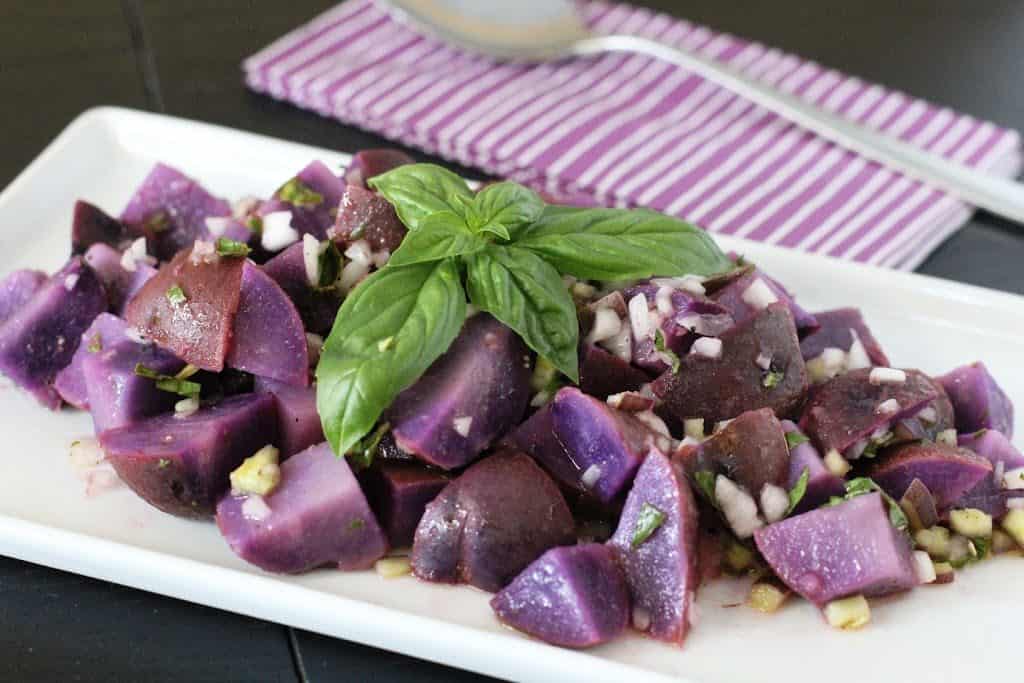
Salad Blue potatoes stand out from other spuds with their unique appearance. They’re believed to be the results of amateur potato breeding during the Victorian period. At first, these tubers may seem like normal purple potatoes with darker and rounder bodies. When cut them open, most home cooks find the deep blue and white pattern of its inner flesh very surprising.
True to their name, Salad Blue potatoes are the best option for several potato salad recipes. Their delicate taste also goes with complex recipes like the Potato Volcano. Beginner home cooks can also add these beautiful potatoes to mashed potatoes, simple slow-cooked meals, or leftover recipes.
17. Vivaldi Potatoes
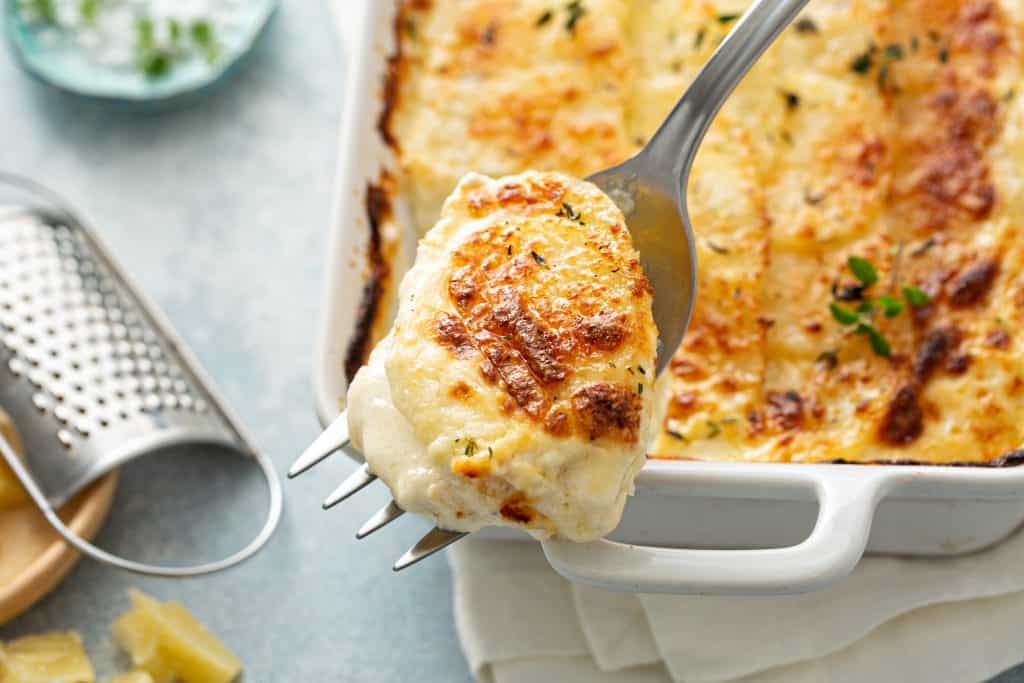
Another great spud for those hoping to lose weight is the Vivaldi potato. This type of potato received great acclaim when researchers discovered that it contains lower calories and carbohydrates compared to more popular spuds. It was named after Italian Baroque musician Antonio Vivaldi because they’re available during all four seasons in the UK and overseas.
Vivaldi potatoes appear to be a mix of white and yellow potatoes. Once cooked, these spuds bring out a smooth and velvety texture that goes well with mashed potatoes or soups. Simple cooking methods for Vivaldi potatoes include sautéing or baking them with a few seasoning and herbs. You can also challenge yourself by using Vivaldi Potatoes in cooking Martha Stewart’s Potatoes Dauphinoise.
18. Desiree Potatoes
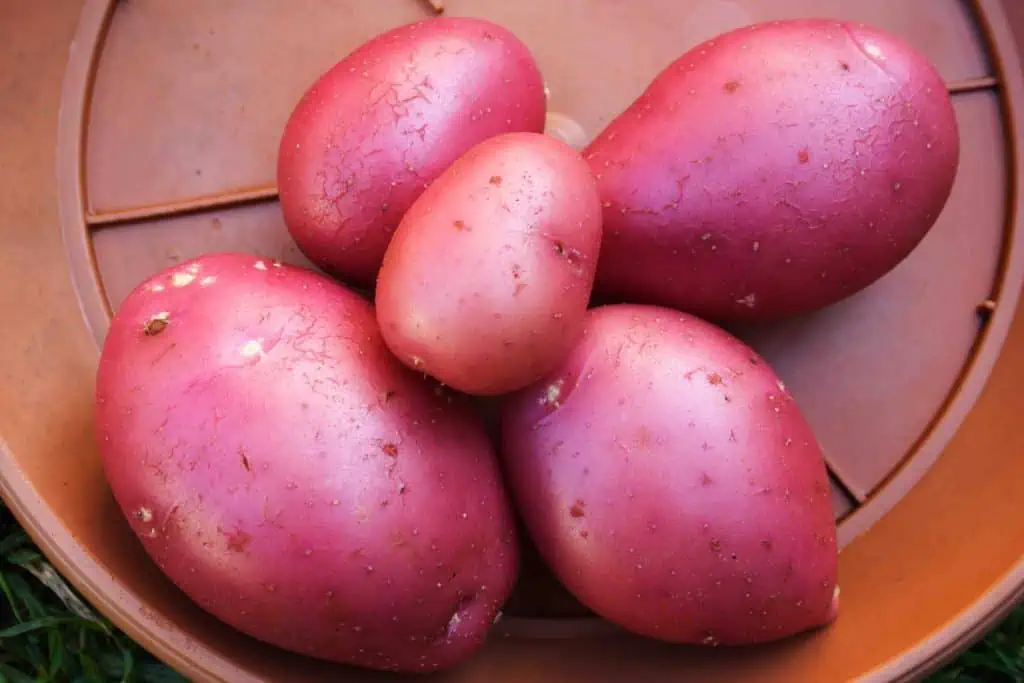
Desiree potatoes belong to the red spud variant due to their pink or light-red outer skin. It’s a famous main-crop potato that is fairly resistant to underground diseases before and after harvest. Many people mistake the Desiree potatoes as unripe due to their waxy texture once cut open. However, its firmness remains after cooking, making it a great main ingredient for potato omelets or potato au gratin.
As mentioned, the common recipes with Desiree potatoes include baked famous potato dishes like potato au gratin. However, you can also enjoy this spud’s smooth texture in potato dishes like potato falafel. Most online recipes recommend sweet potatoes but you can use Desiree potatoes as an alternative.
19. Maris Peer Potatoes
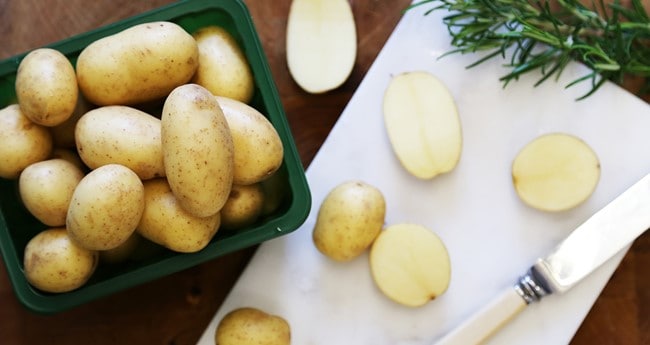
Potato sellers or farmers often sell frozen Maris Peer potatoes since their harvest mainly occurs in October to mid-December. However, they’re available in online stores or groceries all year round in the UK. If you have them at home, it’s best to cook them right away. Maris Peer potatoes can only last for around 10 days in storage. If kept for longer, a few flowers will start to sprout on its light beige outer skin.
Because of their light flavor, Maris Peer potatoes go well with salads or as roasted sides to grilled meat. They’re also easy to slice and prepare thanks to the small size of their round or oval bodies. When used as a side dish, you can opt to keep or remove the outer skin. However, Maris Peer potatoes taste best when cubed or cooked without the skin if added to salads. This method helps the potatoes absorb the seasoning, dressing, or vinaigrette in the salad.
20. Highland Burgundy Potatoes
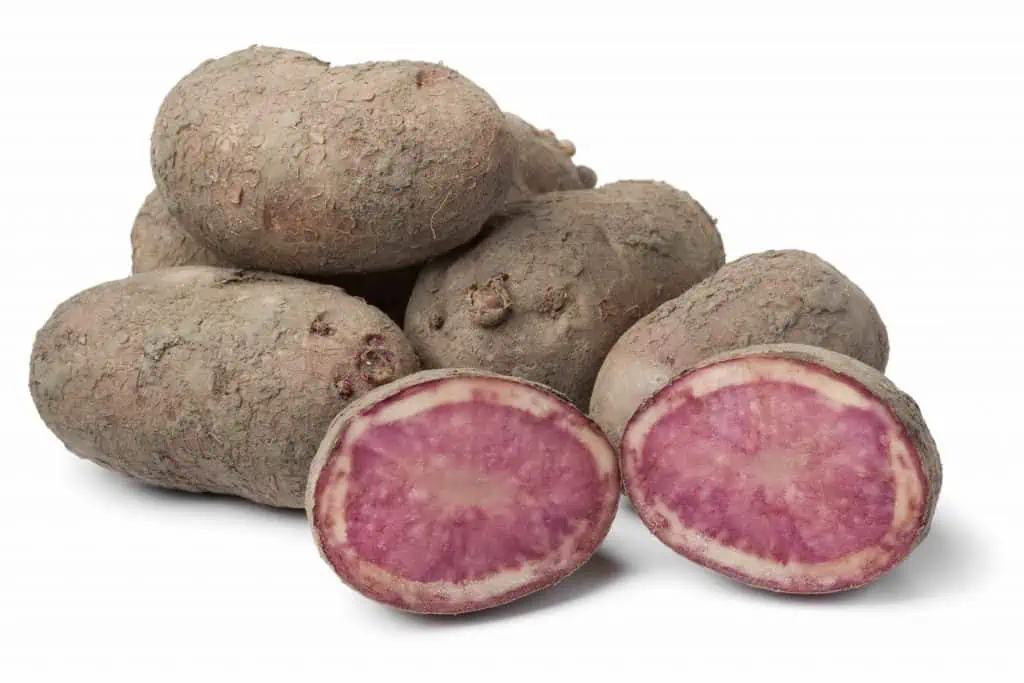
Highland Burgundy potatoes seem like either purple or red potatoes on the outside due to their dark outer skin. However, once cut open, these spuds offer a beautiful marbled burgundy color surrounded by a white or yellow ring. This type of potato was developed to add appropriate color for the meals served to the Duke of Burgundy in London. Its estimated production dates back to around 1936 in the UK.
While preparing for your meal, we strongly suggest that you keep the spud’s skin when cooking to retain its unique appearance. Once cooked, the inner flesh of Highland Burgundy potatoes becomes fluffy and soft to the bite. Because of this, you can fry them with purple potatoes to make colorful potato crisps or wedges. You can also cook them as sides to pan-fried or savory meat like Garlic Butter Herb Steak and Mushrooms.
Making Use of the Types of Potatoes Available Near You
Who knew there’s more to potatoes than the classics like Russet and Yukon Gold? With our list, you can try out the best potato variants for different potato dishes. The simplest recipes for all types are fried and roasted potatoes. These methods are tried, true, and bring out the delicate and unique flavor of each spud on our list. You can also challenge yourself by slow-cooking or creating homemade potato gnocchi.
After learning about several potatoes, you can now purchase other spuds, not just the classics. Surprise your guests or loved ones with colorful potatoes like the Highland Burgundy or the Salad Blue. You can also treat them to fancy-looking meals by cooking with Vitelotte or Red potatoes.
Was this page helpful?
Our commitment to delivering trustworthy and engaging content is at the heart of what we do. Each fact on our site is contributed by real users like you, bringing a wealth of diverse insights and information. To ensure the highest standards of accuracy and reliability, our dedicated editors meticulously review each submission. This process guarantees that the facts we share are not only fascinating but also credible. Trust in our commitment to quality and authenticity as you explore and learn with us.
